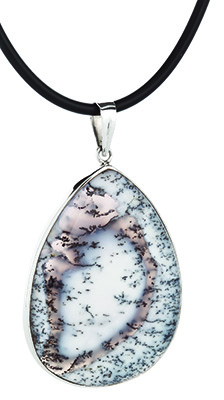Our national gemstone has been given a shakeup recently with the introduction of a synthetic opal called Monarch Opal. They appear strikingly similar to their natural counterparts and have been popping up on various online sites such as Etsy, with retailers selling it as Monarch Opal but failing to mention that they are synthetic.
What is it?
Monarch Opal was created by the developer of the Zachary Process for turquoise, Jim Zachary. Also known as Sterling Opals, Monarch Opals are unique from other synthetic opals such as the Chinese and Gilsen opals in that they include veins or ‘potch lines’ similar to those you’d find in natural opals. The potch lines are black and random like a natural opal and some patterns are snake-like or honeycomb-like, similar to those in Ethiopian opals. All up, they combine the colour and distinctiveness of genuine opal with the economic pricing of synthetic opal.
Telling Signs
Other synthetic opals look unnatural, but Zachary has gone to considerable lengths to make the veins and patterns on Monarch Opals as close to natural as possible. This observation was echoed by assistant manager of Opals Down Under, Rhys Fox, who said Monarch Opals are of a calibre he has not seen before. For Rhys however, Monarch Opals appear too good to be natural.
“Those who know their opal, particularly Black Opal, can see that the potch lines in Monarch Opal are too frequent, but unfortunately, we’re a small minority, and those that do trade in this material would be aiming at the novice opal appreciator,” he said.
“Also, natural Black Opal gets its darker body tone from the natural potch, whereas Monarch Opal will not. “If you can feel it in person, as with most synthetic opal, it will feel more like plastic/resin.”
Director of Melbourne-based business Lightning Ridge Opal Mines, Atheka Le Souëf, held a similar view, stating that what sets them apart from other synthetic opals is that they lack the “too good to be true” colours often seen in the Chinese and Gilsen opals.
“To me they slightly resemble untreated Andamooka Matrix, but that’s about it for the similarities for me!” she said.
“There is no other natural Australian opal that it actually adequately copies.”
Atheka found it interesting to note that smaller labs will certify Monarch Opals as natural with polymer filling.”
“Smaller labs have been unable to adequately distinguish the difference between it and natural opal, so this has meant that they have recently been sold with authenticity certificates on an online opal site,” she said.
Deceptively Sold
As noted earlier, Monarch Opals are being sold online often without mentioning they are synthetic. Rhys said this deceptive practice is a concern.
“We do know the Opal Association of Australia has been keeping a close eye on such practices, and helping to regulate the sale of such synthetic material,” he said.
His advice for opal buyers to avoid unknowingly buying Monarch Opals would be to ask the seller where the opal is from.
“If the seller can’t tell you, then that would be a good indication (that it’s fake),” he said.
Atheka said the stones’ lack of labelling as synthetic is very deceptive, but nothing new.
“Synthetic opal is all over the internet, often without stating its origins,” she said.
“It’s really buyer beware.”
Opal Industry Unaffected, for Now
Fortunately for both Rhys and Atheka, the introduction of Monarch Opals hasn’t had any impact on their respective businesses. Since Opals Down Under and Lightning Ridge Opal Mine only deal in natural opals and opal doublet and triplets, neither have seen any downturn in trade since the introduction of Monarch Opals. However, Rhys said since that Monarch Opals are only new, they’re currently only retailing online, but believes it won’t take long for them to get into the local markets, and eventually tourist areas.
“However, we do not find it to be such a huge issue with retailers selling an item, as long as they are educating the consumer as to what Monarch Opal actually is,” he said.
Rhys wants to see the governing bodies of the opal jewellery industry and the jewellery industry at large continue to police and govern the practice of dealing with synthetic stones to the public.
“We do hope that the rest of the opal industry within Australia shares our ethical standpoint.”
